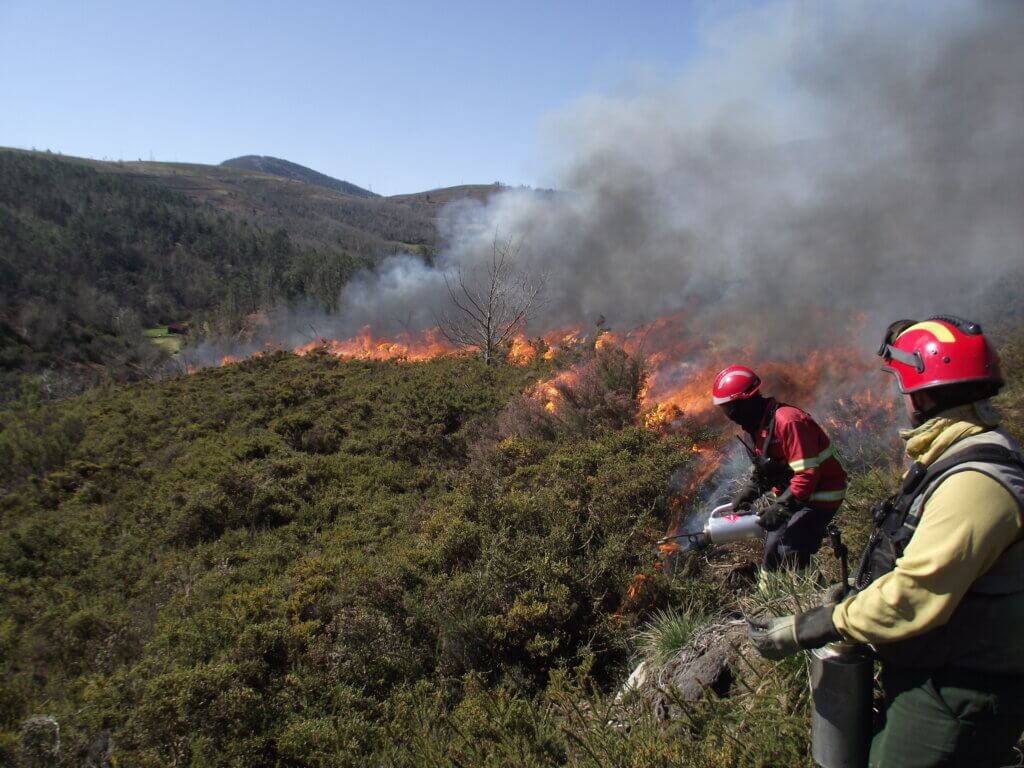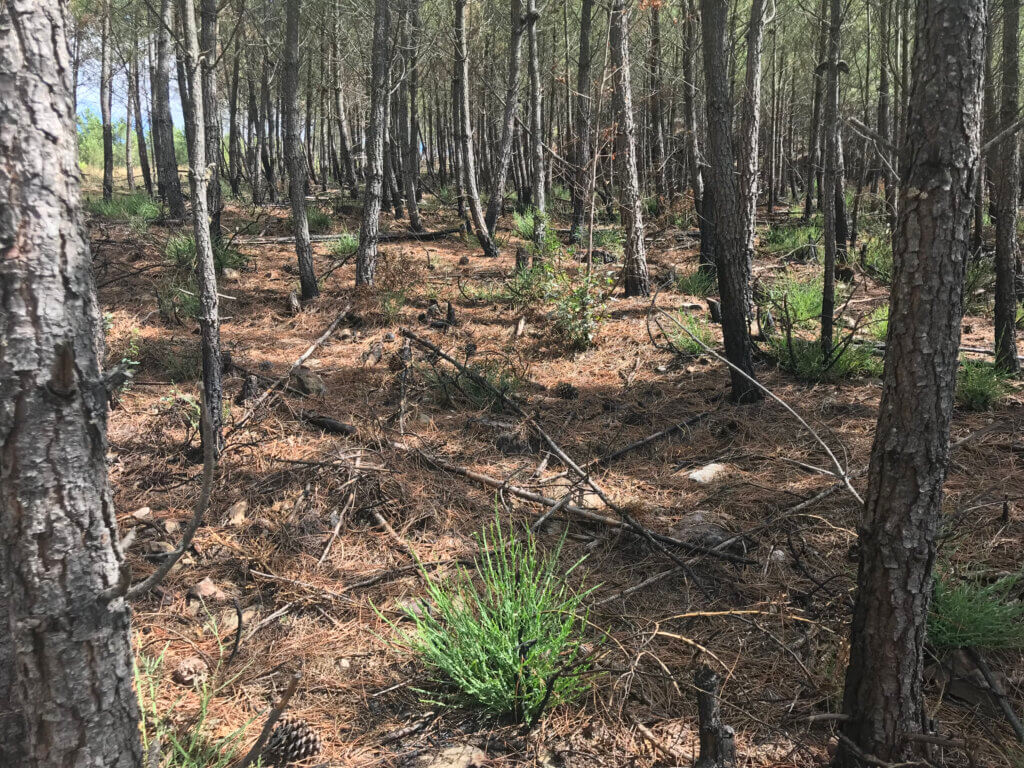PORTUGAL
A DIFFICULT PATH FROM EXPERIMENTATION TO POLICY, AND FROM POLICY TO PRACTICE
BY PAULO FERNANDES
Prescribed burning has been going on for nearly five decades in Portugal. It was in the mid-70s that the pioneer José Moreira da Silva conducted the first forest service trials in the pine forests of the northwest of the country. In 1982, da Silva designed the first regional prescribed fire program in southern Europe. The concurrent scientific research assessed the ecological impacts of the practice and legitimized it, and over time resulted in good practice manuals and decision-support tools for prescribed fire planning, operations, evaluation and training.
Despite these efforts, prescribed burning development and adoption has been slow and unsteady, to the point of almost disappearing after the early 1990s. Opposition to the practice was generalized within the Forest Service and its no-fire culture inherited from Central-European forestry. It is revealing that, despite all the science and experience available, it was never possible to apply prescribed burning in the state-owned coastal forests of maritime pine (Pinus pinaster), of which half were eventually lost to the 2017 wildfires. In contrast, the maritime pine plantations established in southwestern Australia have been regularly treated with fire since the 1970s.
Policy and institutional support for prescribed burning in the early 2000s resulted in training standards for burn bosses and burn crews and the first handson training initiatives. But it was the severe wildfire seasons of 2003 and 2005 that changed the outlook for prescribed burning in Portugal. A dedicated legal and regulatory framework was set up, including the formalization of planning procedures for burn operations. The first national fire plan (2006) foresaw a role for prescribed burning within its “increased resilience to wildfire” axis and program for strategically placed fuel break networks and fuel-treatment mosaics.
The 2006-2010 period was thrilling for fire lighters, and was one of capacity building and various fruitful exchanges between European practitioners promoted by FIRE PARADOX, a large international R&D project that launched the idea of integrated fire management in Europe. The GEFoCo program and the newly created fire analysis crews made possible expansion of the treated area during that period. GEFoCo was short-lived but it circumvented the chronic deficit of resources for burning through expedited funding mechanisms and sharing of resources.
Prescribed burning in Portugal has always been vulnerable to changes in organizations and dependent on individual (un)willingness. Like in the past, and despite increasingly higher acceptance and knowledge transfer, its development stalled after 2010 due to an unfavorable environment in the forest service. Then came the catastrophic fires of 2017 and the subsequent imperative for a more balanced policy in terms of fire suppression versus prevention and mitigation. An ambitious (considering the scarce resources available) national plan was prepared for 2018 to 2020 to substantially increase prescribed burning area, but it underachieved by a large margin. Currently (the National Plan for the Integrated Management of Rural Fires, 2020-2030), fire use is featured as an integrated strategy comprising not just prescribed burning but also pastoral burning and managed wildfire.


The major objective of prescribed burning in Portugal is fuels reduction. Research indicates decreased fire severity in treated pine stands intersected by wildfire but a modest effect on wildfire extent. The latter is an outcome of low treatment effort: where prescribed burning is practiced, it amounts on average and annually to around 0.5 per cent of the landscape, that is, one order of magnitude below the needs of wildfire control. Burn units are small and dispersed and their placement is seldom studied to optimize impact on wildfires. Additionally, the effect of treatments on wildfire spread is mostly passive, as the bulk of fire suppression resources are engaged in civil protection duties at rural-urban interfaces, and wildland firefighters are scarce.
Prescribed burning in Portugal is essentially (90 per cent) carried out in shrublands located in mountain common lands, and as such it contributes to management goals other than decreasing fire hazard. Common lands often have pastoral use and overlap with fire-adapted Natura 2000 habitats, and both benefit from prescribed burning. On the other hand, it can be argued from a risk-analysis perspective that prescribed burning is practiced where it is less needed, because those areas are characterized by frequent unplanned fires for pastures renewal and fuel-age mosaics that have been shown to limit wildfire size.
The largest and most severe wildfires in Portugal occur in large continuous tracts of pine and eucalypt forest and mature shrubland and woodland. The former, either planted or regenerating, are commonly undermanaged or abandoned. Considering the socioeconomic impact and substantial threat to rural communities and ruralurban interfaces, these areas should be prioritized for fuel management. Prescribed burning could play a significant role here, namely in high-density post-fire regeneration where the scale of intervention makes mechanical thinning prohibitive. However, the fact that these lands are privately owned and the prevailing small-sized properties constitute a tough challenge for forest management in general.
The current fire management policy in Portugal is quite progressive by European standards. As always, the difficulty will be to develop the policy into action, as prescribed burning expansion faces several cultural, institutional and practical barriers. Notwithstanding, Portugal is now co-leading (with France) prescribed burning activity in southern Europe. Limited funding and the amount of trained and dedicated human resources are the two major obstacles to prescribed burning development. And, while the need to scale-up prescribed fire treatments is manifest, its integration with fire suppression must improve. Other challenges are more technical than political, but affect the quality of treatment outcomes and should be tackled accordingly, namely the increased use of decision-support tools for better planning, increased emphasis on the results obtained, improved operational documentation, and implementation of institutional monitoring.
ABOUT THE AUTHOR
Paulo Fernandes is a wildland fire professor and researcher at the University of Trás-os-Montes and Alto Douro and the ForestWISE CoLab, Portugal. He is an associate editor for the International Journal of Wildland Fire and has served in the IAWF board of directors.
